Overview
The processes for assessing, preparing and procuring a PPP project should be seen in the light of the wider cycle of activities that take every public investment project from inception to actual delivery of the project’s objectives, whether as a PPP or as a traditional infrastructure procurement project.
From a practical point of view, it also makes sense for any PPP process to be integrated as far as possible with any framework that may already exist in a country for the delivery of all public investment projects.
Phases in the project cycle
The life of a project can be broken into four key phases. This is often referred to as the project cycle. A phased approach helps in understanding more clearly what is involved over the life of a project. It also helps in managing the process more efficiently and effectively, because it enables decision-makers to take decisions at critical points over the life of the project. This forms an important part of the quality control process, and prevents projects from developing too far in the wrong direction and wasting resources.
Four key phases of the project cycle are:
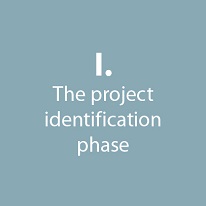 |
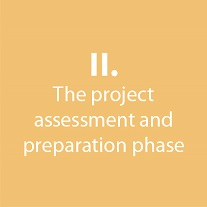 |
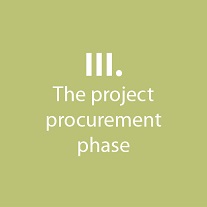 |
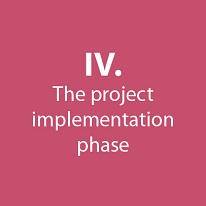 |
The critical importance of the project identification phase
The way a PPP is prepared and procured, and whether a PPP arrangement can be justified as the optimal delivery route, depend heavily on the initial steps taken to define the project, during the project identification phase. For example, successfully delivering a project as a PPP relies on the underlying project itself making economic sense and addressing a clearly defined need.
Not an entirely sequential process
While it helps to break the project cycle into distinct phases for the reasons outlined above, it is also important to recognise the interdependency of the various phases, and the interdependency of activities that take place within each phase. For example, an assessment of affordability during Phase II may have a significant impact on the scope of the project as previously defined in Phase I. Accordingly, it is important, at the end of each phase, to ensure that all of the iterative relationships with previous phases—and within the phase—have been considered and adjusted for as far as possible, before moving on to the next phase.
Available models
It is outside the scope of the EPEC PPP Guide to describe the complete project cycle in full detail.
However, there are a number of highly-developed approaches to project cycle management—some of which apply to all forms of public investment, including both traditional infrastructure procurement projects and PPP projects. One example of such an approach (for both PPP and traditional infrastructure procurement projects) is the Five Case Model developed in the United Kingdom.
The following sections focus on PPP-related activities over each phase of the project cycle.
1. Phase I - Project identification
Description
The project identification phase represents the first phase in the project cycle. This phase involves the following five activities – each of which have an interdependent relationship with one another.
Activity 1: Project definitions
Identification of the project
This activity involves identifying the needs, objectives and outcomes of the proposed initiative, and then shortlisting a limited number of project options that are consistent with those objectives and outcomes. This includes identifying a preferred project option, which will be subject to more detailed assessment in the next phase of the project cycle.
Why is this important for a PPP?
- Ensures that the PPP process delivers the ‘right’ project. A PPP project will be heavily criticised, even if the PPP approach were correct, should the project itself fail to address a well-established need.
- Reduces the likelihood that the objectives, nature and scope of the project will subsequently need to be changed. Subsequent material changes may delay the procurement process and damage the credibility of the contracting authority. It can also be very expensive for a contracting authority once the PPP contract is signed.
- Provides a solid basis for the subsequent development and analysis of the key PPP design elements, including risk allocation, affordability and commercial viability, together with definition of the service and the payment mechanism.
- Places the contracting authority in a strong position in any future negotiations with the project company.
- Helps the contracting authority to demonstrate, during any future review of the project by the government’s PPP decision-making authority or other agency, that the initial objectives of the project were ultimately achieved.
Activity 2: Delivery options
Preliminary identification of how the project will be delivered
During this activity in Phase I, the contracting authority may seek to identify, on a preliminary basis, the expected approach for delivering the project – either using a PPP arrangement or, alternatively, a traditional infrastructure procurement process. In making this determination, the contracting authority also normally makes an initial assessment of the capacity of the market to deliver the project. The choice of delivery approach can also be guided by the initial stages of a value-for-money assessment. Such an early-stage high-level assessment recognises that different project options may have features that are linked to the way the project might be delivered.
Why is this important for a PPP?
- Ensures that the PPP option is given consideration as one of the potential project procurement/ delivery routes from an early stage.
- Ensures that the contracting authority’s motivations to use a PPP approach are clearly defined, and that the basis for assessing the value for money of the procurement/delivery approach is focused on the contracting authority’s priorities.
- Indicates if there is early-stage potential suitability for the project to be procured using a PPP arrangement.
- Helps to identify any fundamental legal or regulatory constraints to a PPP option early on that may first need to be addressed before considering the PPP delivery option any further.
- Allows for any major concerns about the suitability of a delivery option to be identified at a time when it is relatively easy for a contracting authority to change direction, and therefore avoid wasting resources on a delivery approach that is likely to fail.
Activity 3: Affordability
Preliminary identification of the affordability of the project
During this activity in Phase I, the contracting authority identifies, at a preliminary level, the expected costs of the project and the sources of funding and financing expected to pay for these. A preliminary assessment of the expected accounting and statistical treatment may also take place at this stage if the PPP route is considered potentially suitable. Early indications of possible sources of financing and associated conditions may also be sought.
Affordability is an important consideration for every PPP project, whether it is:
- a Government Payment PPP, where payments are made by the contracting authority to the project company, in the form of ‘availability payments’ (also known as ‘unitary charges’) or, in some instances, a ‘shadow toll’ arrangement; or
- an End-User Payment PPP (sometimes described as a ‘concession’), where the funding comes from payments made to the project company by the users of the infrastructure facility; or
- a hybrid PPP, where the funding comes from a combination of government and end-user payments.
Why is this important for a PPP?
- Gives the contracting authority an initial understanding of how the PPP project will be paid for and by whom – in other words, how the project will be funded.
- Provides an early indication of any financing constraints that may affect the project – in other words, how the project will be financed. In this regard, it is important to note the distinction between ‘funding’ and ‘financing’. PPP infrastructure projects typically require debt and equity investors to provide financing, especially during the construction period and during the early years of operation. Subsequently, these investors are repaid using the funding provided by the government (under a Government Payment PPP) or by end users (under an End-User Payment PPP). The term ‘bankability’ is used to describe the ability of a project to attract financing from debt investors.
- Allows the contracting authority, at an early stage of the process, to identify potential sources of any required national or EU grant funding, and to apply for these in a timely manner.
- Helps to ensure that the project is more likely to meet the eligibility requirements (such as environmental, social and governance requirements) of lenders and equity investors, including international financial institutions.
- Provides an early indication of how the project is likely to be treated under the Eurostat statistical assessment of the national debt and deficit indicators.
Activity 4: Stakeholders
Initial identification and engagement with stakeholders
Engagement with stakeholders is highly beneficial even during the early stages of a PPP project. It begins with a consideration of stakeholder needs (for the purpose of defining the project) and also involves assessing stakeholder support for the preferred project option and delivery approach. A stakeholder management plan should be developed during Phase I of the project cycle, as engagement with, and management of, stakeholders can be expected to take place throughout the remaining stages of the project.
Why is this important for a PPP?
- Helps to ensure public support for the project and the way it will be delivered.
- Ensures that the right stakeholders and their requirements are identified from an early stage, when needs are being assessed and the project is still being defined and scoped. This will enable the project and its means of delivery to be shaped appropriately, before it becomes more difficult to change the PPP project to accommodate stakeholder requirements later on.
- Provides credibility to the processes for ensuring that stakeholder issues are taken seriously and acted upon. This reduces the risk of disruptive opposition from stakeholders to the project or to the PPP delivery approach at a later point in the project cycle.
Activity 5: Management
Identification of the relevant approval processes, expected timelines, resources and governance arrangements that will be needed to organise the next phase in the project cycle
The assessment and preparation of the project requires careful project management and the mobilisation of appropriate skills. This, in turn, involves developing a project plan and timeline and identifying all necessary approvals. It also involves establishing the approach to managing risks including setting up the initial project risk register. A plan may also be put in place to establish how the future project benefits will be measured and monitored. Finally, any studies that will be required for the more detailed assessment of the project in the next phase are likely to be identified and scoped at this stage. This will include all environmental and social studies, as well as other technical studies.
Why is this important for a PPP?
- Ensures that the appropriate resources and budgets are in place for any specialist skills that are likely to be required, taking into consideration the time necessary to procure these.
- Ensures that the contracting authority has a mechanism in place from an early stage (such as a risk register) to start to identify and manage all risks associated with the project and with its preparation and delivery.
- Enables adjustments to be made to the nature and scope of the project at an early stage to accommodate environmental and social issues, when such changes are likely to be less difficult and costly to accommodate than would be the case at a later point in the project cycle.
Moving out to the next phase
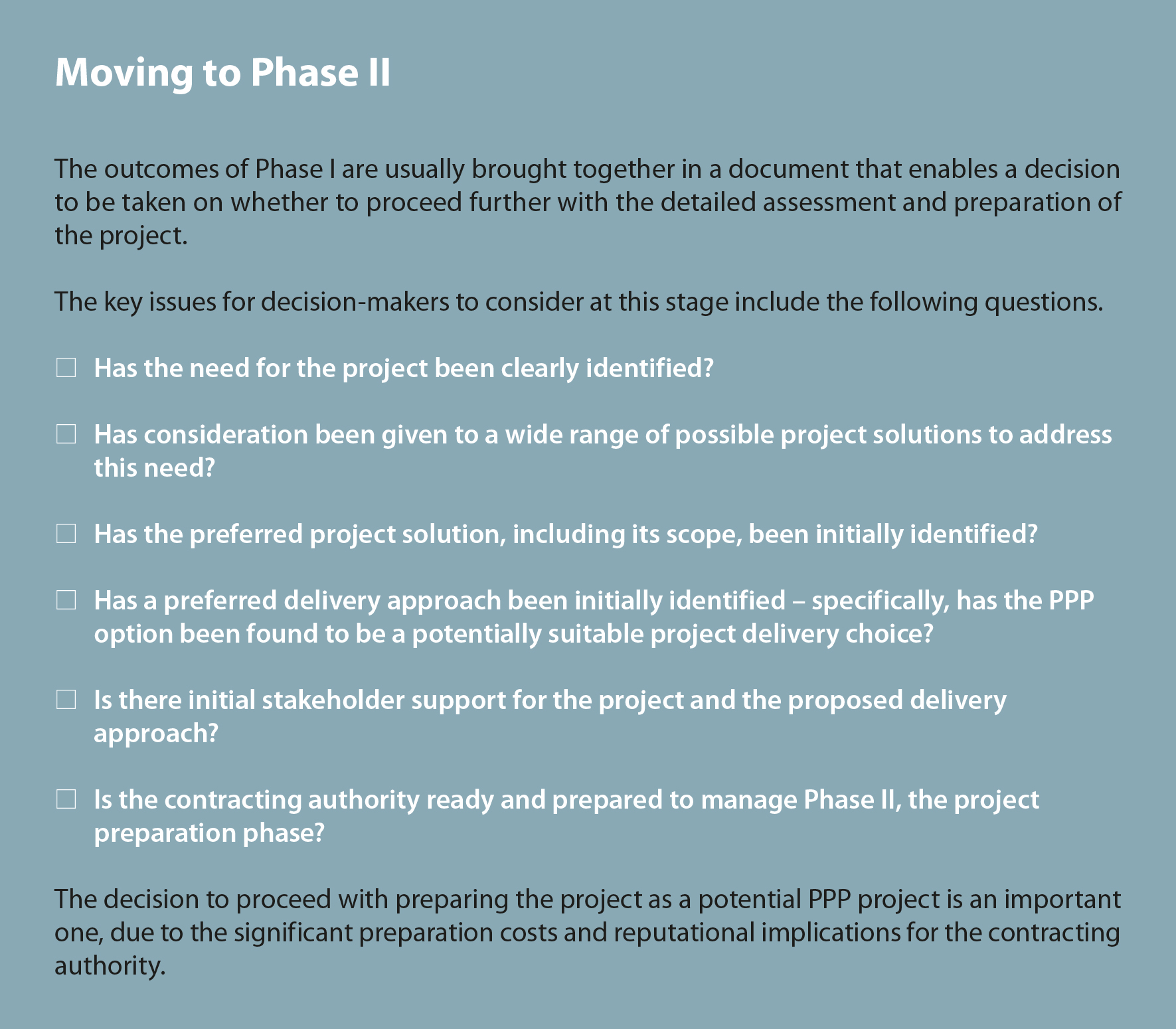
2. Phase II - Project preparation
Description
Once a preferred project solution and its potential delivery using a PPP approach has been identified in Phase I, the contracting authority should start preparing the project in order to make it ready for procurement. However, since the choice of a project solution and delivery approach are, at this point, only based on preliminary assessments, it is important that the contracting authority develop the project in more detail, in order to confirm or potentially revisit the assessments made in Phase I.
Therefore, Phase II should be advanced in a gradual and iterative way, as many of the activities set out below are interdependent. For example, any changes to the allocation of risks under the PPP contract terms might have an impact on the cost of the financial structure for the project and, therefore, on the affordability of the project.
The following list provides a broad overview of the seven main Phase II activities. As a separate knowledge product, EPEC’s PPP Project Preparation Status Tool provides a detailed checklist for all of the activities set out below.
Activity 1: Project definition
Confirming (or rejecting) the proposed project as the preferred solution for meeting a public need
At the start of Phase II, the contracting authority should still have a shortlist of project solutions for consideration. During this activity in Phase II, the contracting authority undertakes a detailed assessment of those shortlisted project solutions, in terms of benefits, costs and risks, with a view to selecting the optimal project option. This also includes any environmental and social impact assessments of the shortlisted project options, and the development of a plan to manage and monitor any impact and risks.
Why is this important for a PPP?
- Ensures that the rationale and scope of the underlying project remain sound, and are unlikely to change at a later stage.
- Ensures that the requirements of all relevant stakeholders and all social and environmental impacts have been taken into account in the choice of project and the services it will provide.
Activity 2: Delivery option
Confirming (or rejecting) the use of a PPP approach as the preferred delivery option
This activity in Phase II involves a more detailed comparison of the PPP delivery approach, with better data on the project, against alternative delivery options, in order to select a preferred project solution. This activity involves a more substantial commitment of resources by the contracting authority in order to carry out a detailed assessment of the proposed project. The purpose is to confirm (or reject), on a reasoned basis, the choice of a PPP approach as the appropriate project delivery option in terms of value for money during this phase
Why is this important for a PPP?
- Ensures that the decision to formally procure the project using a PPP arrangement is justified on a value-for-money basis.
Activity 3: Affordability
Confirming the affordability of the project
This activity involves refining and assessing, in more detail, the affordability analysis undertaken in Phase I, particularly in regard to the expected costs of the project throughout its economic life; the sources of funding and financing to pay for those costs; and the expected budgeting, accounting and statistical treatment of the project. In the case of projects within the European Union, the treatment of the project under Eurostat rules for the statistical assessment of the national debt and deficit indicators is a significant consideration. In addition, the Phase II affordability assessment usually involves developing a financial model – which will also be used for the value-for-money assessment and, at a later point, to assess bids during the Phase III procurement process.
As part of this activity in Phase II, the contracting authority should also commence the detailed application process for national/EU grant funding for the PPP project, if such funding is available.
Why is this important for a PPP?
- Ensures that the long-term costs of the project that are expected to be paid by the contracting authority and/or end users have been assessed as accurately as possible. This will reduce the risk of future surprises in budgetary, accounting and statistical impact.
- Minimises any delays in applying for available national/EU funding and helps to ensure that the potential availability of such funding can be confirmed for bidders prior to/early on during the Phase III procurement process.
Activity 4: PPP contract
Developing the PPP contractual structure and terms
This activity involves the initial development of the detailed structure and terms of the PPP contract, including:
- setting out the contract scope, service output requirements and key performance indicators;
- determining the responsibilities of the public and private parties and the expected allocation of risks between them;
- developing the contractual mechanism to determine how the project company will be paid for the delivery of the service outputs (which may involve an availability-based payment mechanism, or an end-user tariff mechanism); and
- developing other relevant PPP contract terms, including early termination and variation provisions, to reflect the respective rights and obligations of the contracting authority and the project company.
This activity may also involve carrying out structured sounding of the market, and making any adjustments as necessary, to ensure that the proposed contract terms and the allocation of risks are likely to be acceptable to bidders and financiers, while also achieving value for money for the contracting authority.
Why is this important for a PPP?
- Ensures that the proposed terms of the PPP contract will be bankable.
- Attracts strong interest and competition from bidders in the Phase III procurement process.
Activity 5: Procurement
Preparing the procurement process
This activity involves selecting the appropriate public procurement procedure, planning how this will be undertaken (such as the evaluation criteria to be used to assess bids) and preparing all relevant procurement documents and procedures for bidders such as the bidding instructions and project information
Why is this important for a PPP?
- Ensures that the contracting authority will be able to run an effective and efficient procurement process.
- Encourages bidder interest in the project.
- Minimises the risk of challenges from unsuccessful bidders.
Activity 6: Stakeholders
Managing stakeholders
In accordance with the preliminary stakeholder management plan developed in Phase I, this activity involves further engagement with all relevant project stakeholders. The feedback received from stakeholders should be incorporated in the other work done during Phase II.
Why is this important for a PPP?
- Ensures that stakeholder support for the project – and for the decision to use a PPP delivery approach – remains strong, thereby minimising the risk of needing to make changes to the project later in response to stakeholder requirements.
Activity 7: Management
Managing the process
Building on the preliminary project management arrangements developed during Phase I, the Phase II management actions typically include putting in place the project team and the governance arrangements at the start of Phase II to carry out/oversee the work during this and subsequent phases. More specifically, this activity includes:
- appointing external advisors to assist the project team, and commissioning the required environmental, social and other technical studies identified in Phase I;
- identifying and, to the extent possible, obtaining the permits and approvals to implement the project;
- updating and developing the PPP project risk register; and
- planning the resources and management for the next phases, with a detailed timetable to take the PPP transaction to financial close.
Why is this important for a PPP?
- Ensures a strong focus on management and planning given the complex and resource-intensive nature of PPP assessment and preparation activities.
- Helps to minimise any future delays in terms of obtaining the relevant consents and authorisations.
Moving out to the next phase
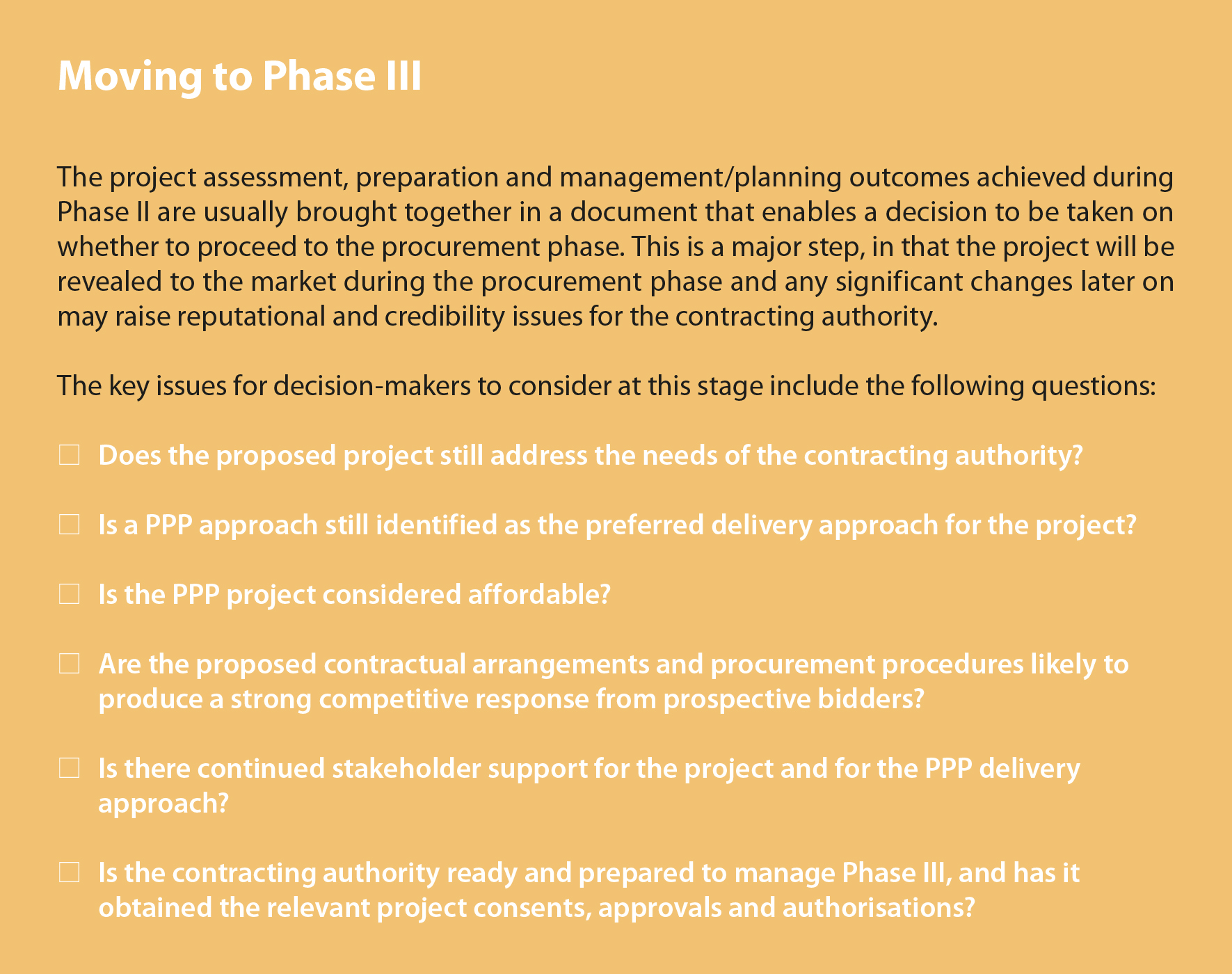
3. Phase III - Procurement
Description
During the procurement phase, the contracting authority uses a competitive process in order to select a bid that best meets its requirements, while also ensuring that the process stands up to scrutiny and minimises the risk of challenges made by unsuccessful bidders.
The procurement phase formally starts with the publication of the contract notice and ends once the PPP contract and any other project agreements are signed and all prior conditions, including conditions necessary for obtaining financing, have been met. The point at which the PPP contract is signed is known as commercial close, and the later point at which all of the conditions have been met and the financing agreements have been signed is known as financial close.
While the contracting authority will have had some engagement with external parties during Phases I and II, a distinguishing feature of Phase III is that the engagement with external parties now entails significantly greater consequences, both for the contracting authority and the external parties. Close attention must be paid to the formal rules and processes for such engagement. For EU Member States, these will be national laws that reflect the requirements of the relevant EU directives.
The key steps during Phase III include the following actions, which again are interdependent with one another.
Activity 1: Follow the process
Conducting the procurement process in line with the procedure that has been chosen in Phase II
The key activities typically include:
- publication of the contract notice to launch the procurement (and publication of any prior information notice (PIN));
- pre-qualification of interested parties, in line with the published criteria;
- invitation of shortlisted candidates to participate in a competitive dialogue (if this is the procurement procedure selected);
- undertaking competitive dialogue discussions;
- closure of the competitive dialogue process, and issuance of an invitation to submit tender proposals;
- evaluation of the bid proposals and selection of a preferred bidder;
- notification to unsuccessful bidders and a ‘standstill’ period;
- achievement of commercial close and financial close, including signature of all PPP-related agreements and meeting all the conditions precedent to the effectiveness of the agreements; and
- publication of the contract award notice.
Why is this important for a PPP?
- Ensures that competition between the bidders achieves the best possible deal for the contracting authority, so that value for money is maximised, taking into consideration the long-term contractual commitment of the PPP contract.
- Ensures that the selection of the proposed PPP project is conducted in accordance with procurement rules and that the risk of challenge from unsuccessful bidders is minimised.
Activity 2: Other aspects
Managing other aspects of the procurement process
In addition to taking the actions outlined above in Activity 1, the contracting authority also needs, during Phase III, to manage other aspects of the procurement process, including:
- checking to ensure that any changes that may have taken place since Phase II are still consistent with the project needs assessment;
- confirming the decision to proceed with the proposed PPP project in terms of the costs, benefits and risks, in the light of the competitive dialogue and actual bid proposals received – which also includes confirming that the preferred option still represents value for money;
- checking that all environmental and social risks are still within the boundaries acceptable to all relevant stakeholders;
- confirming the affordability of the proposed PPP project, including budget approvals for all obligations (actual and contingent) arising from the proposed PPP contract and of the expected Eurostat statistical treatment of the PPP contract;
- reviewing and finalising the plans, initiated in Phase II, for the management of the PPP contract once it is signed, ensuring that the contracting authority has the necessary resources and processes in place for this work;
- updating the risk register;
- undertaking any required stakeholder engagement actions, such as informing key stakeholders on the selection of the bidder and of the next steps to the taken; and
- obtaining all remaining approvals and consents for which the contracting authority is responsible under the PPP contract.
Why is this important for a PPP?
- Ensures that the deal about to be signed still meets the contracting authority’s needs; is supported by all relevant stakeholders; and meets the required environmental and social standards.
- Ensures that competition between bidders achieves the best deal for the contracting authority, so that value for money is maximised.
- Ensures that the selection of the proposed PPP project is conducted in accordance with procurement rules and that the risk of challenge from unsuccessful bidders is minimised.
- Ensures that the payments under the PPP project are still affordable for the contracting authority and/or end users.
- Ensures that the right resources are in place for the management, reporting and oversight of the PPP contract after it has been signed.
Moving out to the next phase
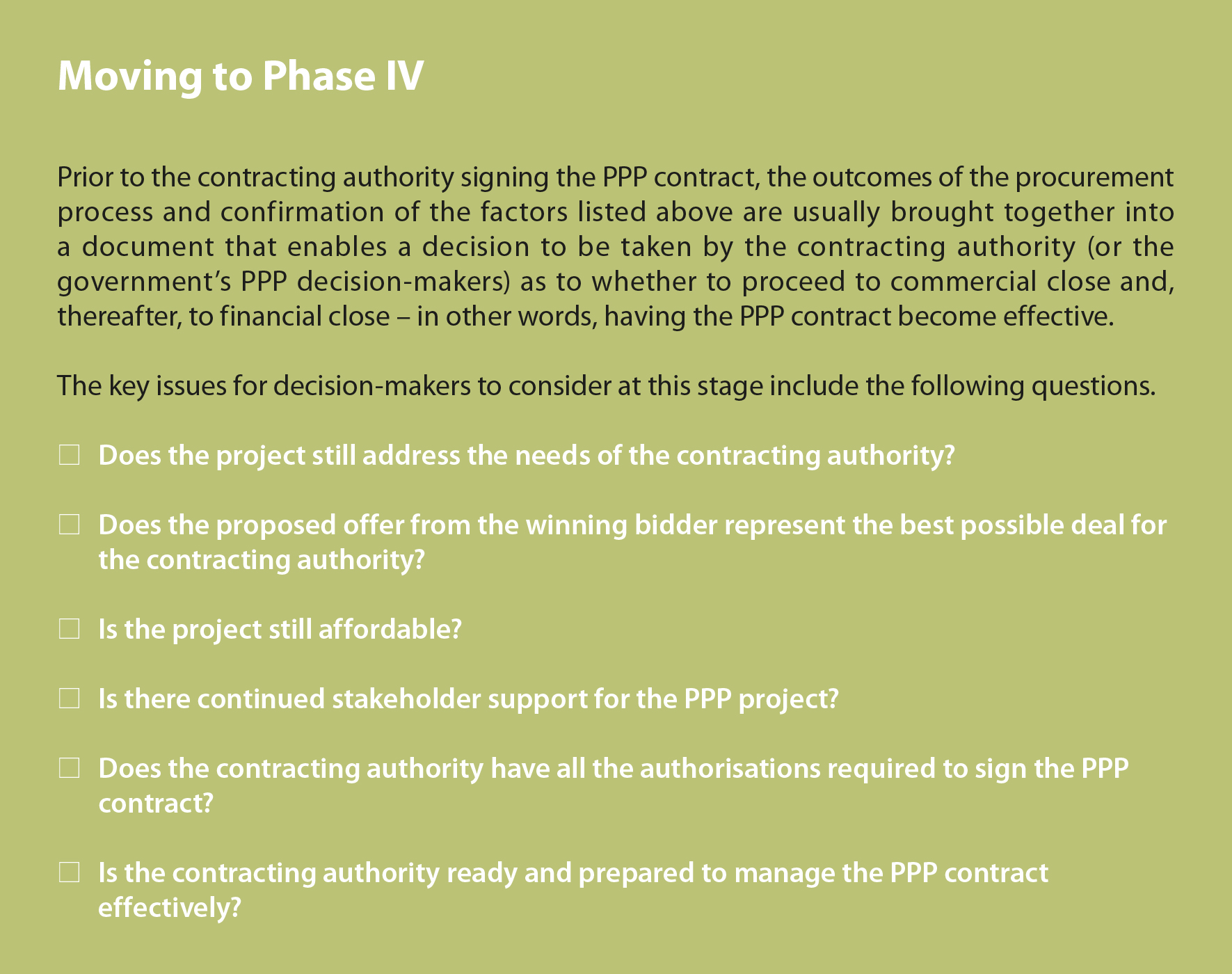
4. Phase IV - Implementation
Description
The implementation phase is the longest phase of a PPP project. It involves the three sequential stages:
- the construction stage, during which the infrastructure facility is built (and/or renovated, where applicable);
- the operations and maintenance stage, during which the infrastructure service is delivered to the public; and
- the handback stage, during which the facility is returned to the contracting authority.
The implementation phase ends once the PPP contract reaches the agreed expiry date or is prematurely terminated.
Although good preparation and procurement of a PPP project are important, the manner in which the PPP contract is overseen and managed during implementation is critical to its success or failure, and to the delivery of the anticipated value for money. Active management of the PPP contract throughout its term by the contracting authority is therefore essential – even if the project company has been contracted to provide the actual service. The management of the contract will be carried out by the contracting authority’s contract management team, which will have been planned for and appointed during the earlier phases of the PPP process.
Key activities
The key activities for the contracting authority’s contract management team include:
- carrying out routine contract management activities, including monitoring delivery of the infrastructure asset and service outputs;
- ensuring that the contracting authority complies with all its legal obligations, as set out in the PPP contract;
- administering availability payments and any deductions in line with the payment mechanism in the PPP contract (for Government Payment PPPs);
- updating and managing the risk register;
- managing stakeholders and communications;
- acting as the immediate interface with the project company in relation to contract events such as changes to the PPP contract services, debt refinancing or disputes and their resolution – but usually with specialist assistance from within the contracting authority and/or from external advisors, as necessary;
- assisting the contracting authority or any government review bodies with public or internal implementation evaluations of the project; and
- planning and managing the termination/expiry of the PPP contract, including, if applicable, rebidding/continuation of the service and/or the handback of the project assets to the contracting authority (or other new service provider).
Why is this important for a PPP?
- Ensures that the PPP contract continues to deliver the service in line with the terms agreed upon.
- Ensures that value for money continues to be delivered throughout the term of the PPP contract.
- Ensures continuing stakeholder support for the PPP project.
- Ensures that the outputs and outcomes of the PPP project and the performance of the contracting authority are appropriately evaluated, and that any lessons are learnt for future PPP transactions.
- Ensures that the services provided to the end users are not unexpectedly disrupted once the PPP contract ends.

